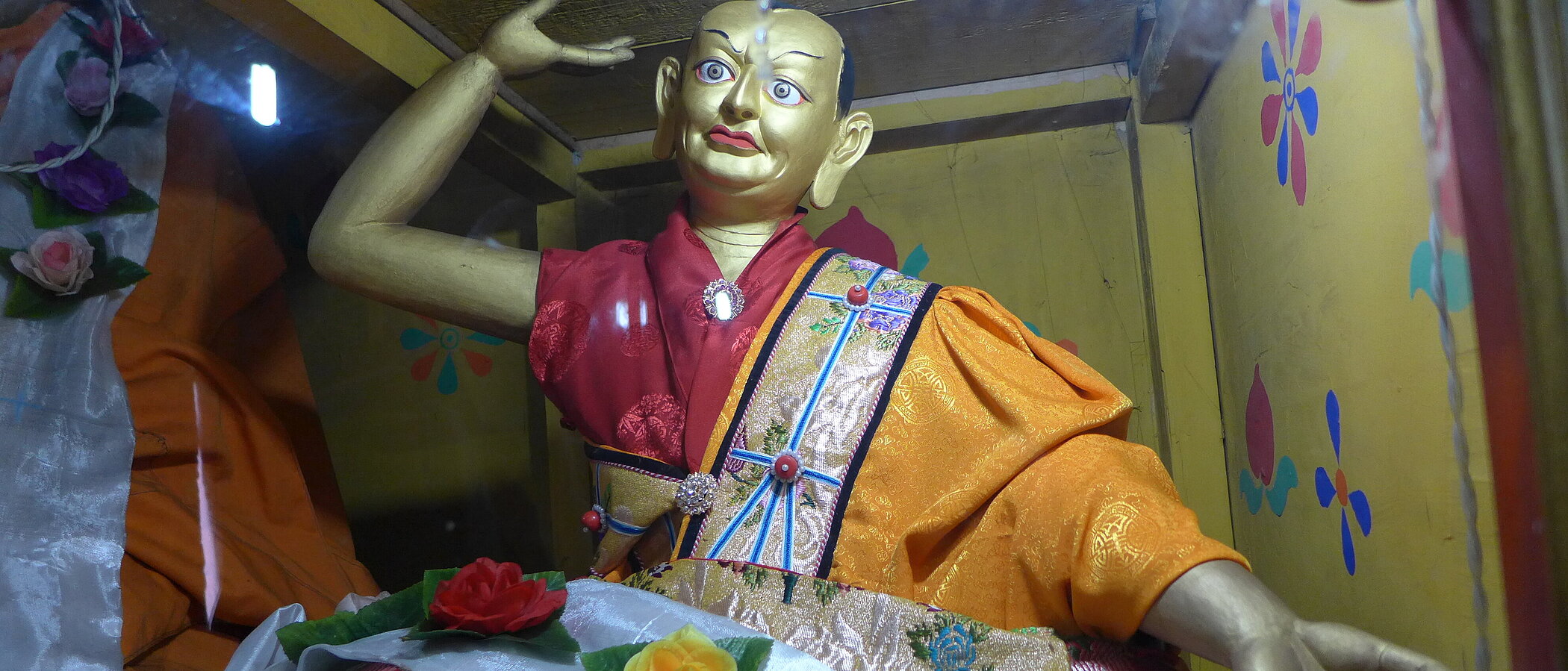
TibSchol - The Dawn of Tibetan Buddhist Scholasticism (11th-13th c.)
The pioneering project TibSchol will take research on Tibetan scholasticism to a new level by achieving the first large-scale study of its formative phase.
The 10th century CE onward witnessed a revival of Buddhist culture in Tibet, and a new flowering of religious and intellectual traditions. Numerous monastic centers were founded, a massive number of Buddhist teachings were introduced, and a huge amount of activity of a literary nature (including translation and composition) was undertaken, involving dynamic interactions between Tibetans and their neighbours. This configuration spurred the development of formal tools of reasoned analysis and hermeneutical devices that were applied to the investigation of Buddhist scriptures and in the context of religio-philosophical discussions.
The TibSchol project addresses these creative contributions, as made by Tibetan Buddhist scholars in the 11th-13th centuries, under the concept of “scholasticism”. It aims to provide an integrative picture of the formative phase of Tibetan scholasticism by mapping personal and intellectual networks, charting the early scholastic corpus, and exploring how Tibetan thinkers designed and used scholastic tools and methods.
TibSchol’s research team works within a framework of five sub-projects:
- Persons, schools, and networks in early Tibetan scholasticism
- Early Tibetan scholastic literature: the corpus, its constitution and diffusion
- Conceptual tools of early Tibetan scholasticism
- Hermeneutics in early Tibetan scholasticism
- Argumentation in early Tibetan scholasticism: theory and practice
TibSchol’s research is primarily rooted in a large set of Tibetan works that were previously unavailable. These are scholastic treatises from the 11-13th centuries that were in large part rediscovered in the Nechu temple (gNas bcu lha khang) at the monastery of Drepung (’Bras spungs) or preserved in other monastic libraries and were published as facsimiles.
The resurfacing of these works enables the exploration of the early developments within Tibetan scholasticism in a depth that has never before been possible. Not only does this give us access, for the first time, to the contributions of the most renowned and influential early figures of the scholastic tradition – in particular scholars associated with the monastery of Sangpu (gSang phu ne’u thog), such as Ngok Lodan Shérab (rNgog Blo ldan shes rab, 1059–1109) and Chapa Chökyi Sengé (Phya pa Chos kyi seng ge, 1109–1169) – it also provides us with evidence of the activities of numerous lesser known or previously unknown scholars whose institutional affiliations and individual philosophical contributions we will explore.
These scholastic works typically contain critical discussions of other scholars’ views, including those of thinkers whose works have not survived. This dialectical mode of intertextuality is indicative of the circulation of texts and ideas within the scholastic community of the time and enables the consideration of philosophical positions in a dynamic framework.
The project articulates personal networks, intellectual networks, and intellectual profiles with the support of an online database developed with the technical expertise of the Austrian Centre for Digital Humanities and Cultural Heritage (ACDH-CH). This offers a method suitable for further synchronic and diachronic explorations of the Tibetan scholarly tradition.
Tibetan scholasticism shaped the Tibetan tradition of learning at large and represents a particularly long-lasting tradition of methodical and systematic learning in human history. Understanding this phenomenon is essential not only for a more complete appreciation of Tibet’s intellectual history but also for a better-grounded global history of philosophy.
Sources and resources
A catalogue of the texts housed in five libraries of Drepung monastery, including Nechu temple, was published in ’Bras spungs dgon du bzhugs su gsol ba’i dpe rnying dkar chag. Ed. dPal brtsegs bod yig dpe rnying zhib ’jug khang. 2 vols. Beijing: Mi rigs dpe skrun khang, 2004.
A large part of TibSchol’s corpus appeared in the series bKa’ gdams gsung ’bum phyogs bsgrigs thengs dang po/gnyis pa/gsum pa/bzhi pa. 120 vols. Ed. dPal brtsegs bod yig dpe rnying zhib ’jug khang. Chengdu: Si khron mi rigs dpe skrun khang, 2006, 2007, 2009, 2015.
Further relevant primary sources are accessible via the Buddhist Digital Resource Center as part of the Buddhist Digital Archives (BUDA).
This project has received funding from the European Research Council (ERC) under the European Union’s Horizon 2020 research and innovation programme (grant agreement No 101001002).
DOI: 10.3030/101001002
Project's fact sheet on CORDIS: https://cordis.europa.eu/project/id/101001002
Media
- Media report: ÖAW researchers bring five ERC grants to Austria (in German)
- Lab Stories: a short movie about TibSchol's PI and the TibSchol project